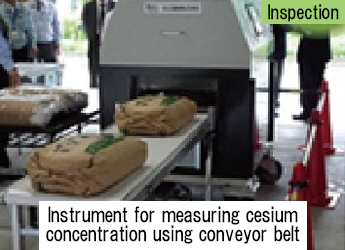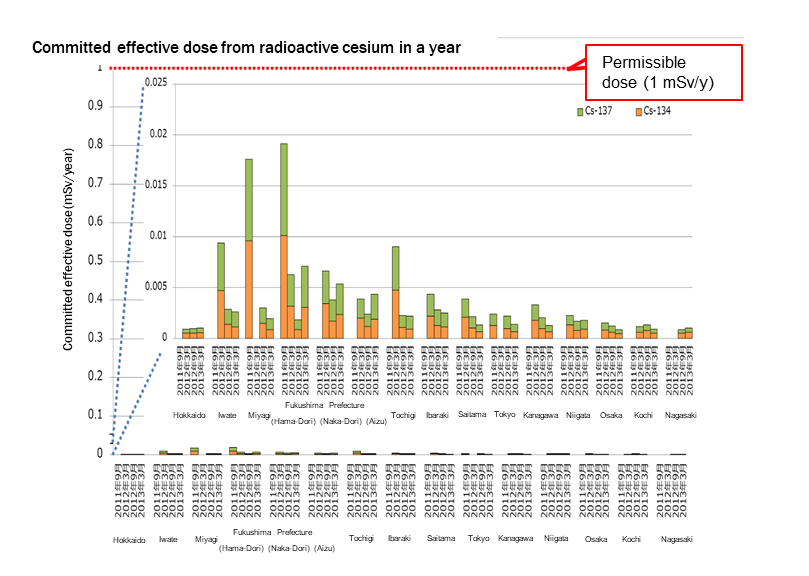Assessment of Exposure Doses and Decontamination
(2020)
QHow is radioactivity in foods measured? What are the radiation doses from foods?
AMeasurement of radioactive cesium in foods has been carefully conducted by Fukushima Prefecture etc. For example, all rice products have been inspected. Foods containing radioactive cesium exceeding the maximum permissible value (100 Bq/kg) are prohibited from market.
Radiation doses from foods on the market are typically much lower than 1 mSv each year.

Fig.1 Inspection of all of rice
- Radiation in many foods are inspected by rapid screening test and precise measurements.
- Recently, the concentration of radiation in foods have rarely exceeded the 100 Bq/kg limit.

Fig.2 Estimated internal radiation dose from foods
- Internal radiation dose has been estimated by 1) individually measuring foods on the market (market basket method) and 2) directly measuring foods on the table (Kagezen method).
- Even the highest radiation dose that has been estimated in the past has not exceeded 0.02 mSv/year.
Related articles
- How is the concentration of radioactive cesium in marine species changing?
- How is radioactivity measured in drinking water? What are the results?
- How is the concentration of radioactive cesium measured in air? What is the radiation dose by breathing?
- How can we evaluate radioactive material taken inside our body?
